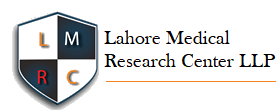Association of Serum Uric Acid-to-Creatinine Ratio with Non-Alcoholic Fatty Liver Disease in the Population of Sargodha
Serum Uric Acid-to-Creatinine Ratio with Non-Alcoholic Fatty Liver Disease
DOI:
https://doi.org/10.54393/pjhs.v6i1.2456Keywords:
Alcohol, Uric Acid, Creatinine, Uric Acid-to-Creatinine Ratio, NAFLDAbstract
Non-alcoholic fatty liver disease (NAFLD) is a growing global health concern, particularly in regions with high obesity rates. Objectives: To evaluate the serum uric acid to serum creatinine (sUA/sCr) ratio as a potential diagnostic biomarker for NAFLD in a Pakistani population. Methods: This cross-sectional study was conducted at the Department of Biochemistry, Niazi Medical and Dental College, Sargodha, from November 2023 to April 2024, with 246 participants presenting with signs and symptoms of NAFLD. Clinical and biochemical parameters, including BMI, waist circumference, blood pressure, fasting blood sugar, lipid profile, high-sensitivity C-reactive protein (hs-CRP), and liver enzymes, were assessed. Logistic regression was used to examine the relationships between these factors and NAFLD prevalence and severity. The serum uric acid/serum creatinine (sUA/sCr) ratio was evaluated as a potential biomarker for severe NAFLD. Data were analyzed using SPSS version 26.0 with ANOVA, chi-square tests, t-tests, and logistic regression. Results: NAFLD prevalence was 39%, with physical activity reducing the risk (OR: 0.65, p=0.015) and age, obesity, hypertension, high blood sugar, cholesterol, triglycerides, and hs-CRP identified as risk factors. Severe NAFLD was associated with increased waist circumference, hypertension, inflammation, and BMI. The sUA/sCr ratio demonstrated excellent predictive accuracy for severe NAFLD (AUC 0.90, sensitivity 85%, specificity 80%, p<0.001). Conclusions: It was concluded that sUA/sCr ratio was a promising non-invasive biomarker for diagnosing and assessing NAFLD severity in the population of Sargodha.
References
Muzurović E, Mikhailidis DP, Mantzoros C. Non-Alcoholic Fatty Liver Disease, Insulin Resistance, Metabolic Syndrome and Their Association with Vascular Risk. Metabolism. 2021 Jun; 119: 154770. doi: 10.1016/j.metabol.2021.154770. DOI: https://doi.org/10.1016/j.metabol.2021.154770
Zarghamravanbakhsh P, Frenkel M, Poretsky L. Metabolic Causes and Consequences of Nonalcoholic Fatty Liver Disease (NAFLD). Metabolism Open. 2021 Dec; 12: 100149. doi: 10.1016/j.metop.2021.100149. DOI: https://doi.org/10.1016/j.metop.2021.100149
Kaya E and Yilmaz Y. Metabolic-Associated Fatty Liver Disease (MAFLD): A Multi-Systemic Disease Beyond the Liver. Journal of Clinical and Translational Hepatology. 2021 Oct; 10(2): 329. doi: 10.14218/JCTH.2021.00178. DOI: https://doi.org/10.14218/JCTH.2021.00178
Sakurai Y, Kubota N, Yamauchi T, Kadowaki T. Role of Insulin Resistance in MAFLD. International Journal of Molecular Sciences. 2021 Apr; 22(8): 4156. doi: 10.3390/ijms22084156. DOI: https://doi.org/10.3390/ijms22084156
Ziolkowska S, Binienda A, Jabłkowski M, Szemraj J, Czarny P. The Interplay Between Insulin Resistance, Inflammation, Oxidative Stress, Base Excision Repair and Metabolic Syndrome in Nonalcoholic Fatty Liver Disease. International Journal of Molecular Sciences. 2021 Oct; 22(20): 11128. doi: 10.3390/ijms222011128. DOI: https://doi.org/10.3390/ijms222011128
Lim S, Kim JW, Targher G. Links Between Metabolic Syndrome and Metabolic Dysfunction-Associated Fatty Liver Disease. Trends in Endocrinology and Metabolism. 2021 Jul; 32(7): 500-14. doi: 10.1016/j.tem.2021.04.008. DOI: https://doi.org/10.1016/j.tem.2021.04.008
Kasper P, Martin A, Lang S, Kuetting F, Goeser T, Demir M et al. NAFLD and Cardiovascular Diseases: A Clinical Review. Clinical Research in Cardiology. 2021 Jul; 110: 921-37. doi: 10.1007/s00392-020-01709-7. DOI: https://doi.org/10.1007/s00392-020-01709-7
Flisiak-Jackiewicz M, Bobrus-Chociej A, Wasilewska N, Lebensztejn DM. From Nonalcoholic Fatty Liver Disease (NAFLD) to Metabolic Dysfunction-Associated Fatty Liver Disease (MAFLD)—New Terminology in Pediatric Patients as a Step in Good Scientific Direction? Journal of Clinical Medicine. 2021 Mar; 10(5): 924. doi: 10.3390/jcm10050924. DOI: https://doi.org/10.3390/jcm10050924
Lee H, Lee YH, Kim SU, Kim HC. Metabolic Dysfunction-Associated Fatty Liver Disease and Incident Cardiovascular Disease Risk: A Nationwide Cohort Study. Clinical Gastroenterology and Hepatology. 2021 Oct; 19(10): 2138-47. doi: 10.1016/j.cgh.2020.12.022. DOI: https://doi.org/10.1016/j.cgh.2020.12.022
Roeb E. Diagnostic and Therapy of Nonalcoholic Fatty Liver Disease: A Narrative Review. Visceral Medicine. 2022 Apr; 38(2): 126-32. doi: 10.1159/000519611. DOI: https://doi.org/10.1159/000519611
Li Y, Chen Y, Tian X, Zhang S, Jiao J. Comparison of Clinical Characteristics Between Obese and Non-Obese Patients with Nonalcoholic Fatty Liver Disease (NAFLD). Diabetes, Metabolic Syndrome and Obesity. 2021 May: 2029-39. doi: 10.2147/DMSO.S304634. DOI: https://doi.org/10.2147/DMSO.S304634
Kumar R, Priyadarshi RN, Anand U. Non-Alcoholic Fatty Liver Disease: Growing Burden, Adverse Outcomes and Associations. Journal of Clinical and Translational Hepatology. 2019 Dec; 8(1): 76. doi: 10.14218/JCTH.2019.00051. DOI: https://doi.org/10.14218/JCTH.2019.00051
Murag S, Ahmed A, Kim D. Recent Epidemiology of Nonalcoholic Fatty Liver Disease. Gut and Liver. 2021. 15(2): 206–216. doi: 10.5009/gnl20127. DOI: https://doi.org/10.5009/gnl20127
Riazi K, Swain MG, Congly SE, Kaplan GG, Shaheen AA. Race and Ethnicity in Non-Alcoholic Fatty Liver Disease (NAFLD): A Narrative Review. Nutrients. 2022 Oct; 14(21): 4556. doi: 10.3390/nu14214556. DOI: https://doi.org/10.3390/nu14214556
Wang X, Han Y, Liu Y, Hu H. Association Between Serum Uric Acid-To-Creatinine Ratio and Non-Alcoholic Fatty Liver Disease: A Cross-Sectional Study in Chinese Non-Obese People with A Normal Range of Low-Density Lipoprotein Cholesterol. Bio-Medical Central Gastroenterology. 2022 Sep; 22(1): 419. doi: 10.1186/s12876-022-02500-w. DOI: https://doi.org/10.1186/s12876-022-02500-w
Keles U, Ow JR, Kuentzel KB, Zhao LN, Kaldis P. Liver-derived metabolites as Signaling Molecules in Fatty Liver Disease. Cellular and Molecular Life Sciences. 2023 Jan; 80(1): 4. doi: 10.1007/s00018-022-04658-8. DOI: https://doi.org/10.1007/s00018-022-04658-8
Xiao Y, Wang H, Han L, Lyu G, Li S. Effect of Uric Acid On Lipid Metabolism Assessed Via Restricted Cubic Splines: A New Insight. Heliyon. 2024 Sep; 10(17). doi: 10.1016/j.heliyon.2024.e37408. DOI: https://doi.org/10.1016/j.heliyon.2024.e37408
Chen S, Chen D, Yang H, Wang X, Wang J, Xu C. Uric Acid-Induced Hepatocytes Lipid Accumulation Through Regulation of Mir-149-5p/FGF21 Axis. Bio-Medical Central Gastroenterology. 2020 Dec; 20: 1-9. doi: 10.1186/s12876-020-01189-z. DOI: https://doi.org/10.1186/s12876-020-01189-z
Choi J, Joe H, Oh JE, Cho YJ, Shin HS, Heo NH. The Correlation Between NAFLD and Serum Uric Acid to Serum Creatinine Ratio. PLoS One. 2023 Jul; 18(7): e0288666. doi: 10.1371/journal.pone.0288666. DOI: https://doi.org/10.1371/journal.pone.0288666
Zhu W, Liang A, Shi P, Yuan S, Zhu Y, Fu J et al. Higher Serum Uric Acid to HDL-Cholesterol Ratio Is Associated with the Onset Of Non-Alcoholic Fatty Liver Disease in A Non-Obese Chinese Population with Normal Blood Lipid Levels. Bio-Medical C Gastroenterology. 2022 Apr; 22(1):1 96. doi: 10.1186/s12876-022-02263-4. DOI: https://doi.org/10.1186/s12876-022-02263-4
Hou N, Feng J, Liu S, Feng J, Xue X, Yin N et al. Correlation Between Serum Uric Acid/Creatinine Ratio and Metabolism-associated Fatty Liver Disease. Chinese General Practice. 2024 Jul; 27(20): 2476. doi: 10.12114/j.issn.1007-9572.2023.0837.
Wang R, Xue F, Wang L, Shi G, Qian G, Yang N et al. Serum Uric Acid to Creatinine Ratio Is Associated with a Higher Prevalence of NAFLD Detected by Fibro-Scan in the United States. Journal of Clinical Laboratory Analysis. 2022 Aug; 36(8): e24590. doi: 10.1002/jcla.24590. DOI: https://doi.org/10.1002/jcla.24590
Zhao Y, Xia J, He H, Liang S, Zhang H, Gan W. Diagnostic Performance of Novel Inflammatory Biomarkers Based On Ratios of Laboratory Indicators for Nonalcoholic Fatty Liver Disease. Frontiers in Endocrinology. 2022 Nov; 13: 981196. doi: 10.3389/fendo.2022.981196. DOI: https://doi.org/10.3389/fendo.2022.981196
Wang Q, Liu K, Zhang T, Wang T, Li H, Wang C et al. A Mediator of the Relationship of Serum Uric Acid to Creatinine Ratio and Nonalcoholic Fatty Liver Disease in Non-Obese Patients with Type 2 Diabetes. Diabetes, Metabolic Syndrome and Obesity. 2024 Dec: 913-23. doi: 10.2147/DMSO.S451852. DOI: https://doi.org/10.2147/DMSO.S451852
Liu J, Wang C, Wang Y, Yao S. Association of Uric Acid to Creatinine Ratio with Metabolic Dysfunction-Associated Fatty Liver in Non-Obese Individuals Without Type 2 Diabetes Mellitus. Diabetes, Metabolic Syndrome and Obesity. 2024 Dec: 131-42. doi: 10.2147/DMSO.S445916. DOI: https://doi.org/10.2147/DMSO.S445916
Downloads
Published
How to Cite
Issue
Section
License
Copyright (c) 2025 Pakistan Journal of Health Sciences

This work is licensed under a Creative Commons Attribution 4.0 International License.
This is an open-access journal and all the published articles / items are distributed under the terms of the Creative Commons Attribution License, which permits unrestricted use, distribution, and reproduction in any medium, provided the original author and source are credited. For comments













